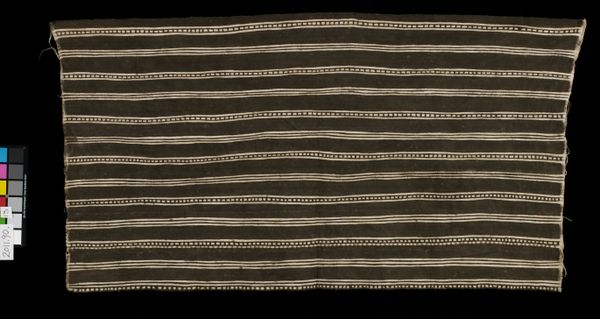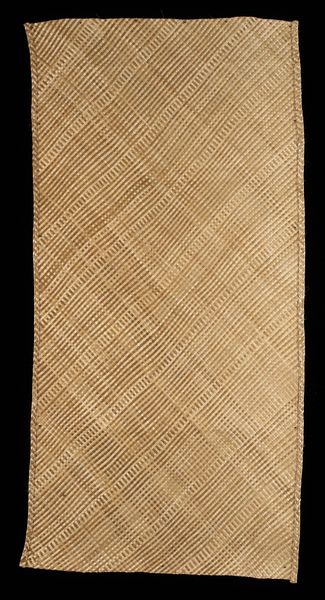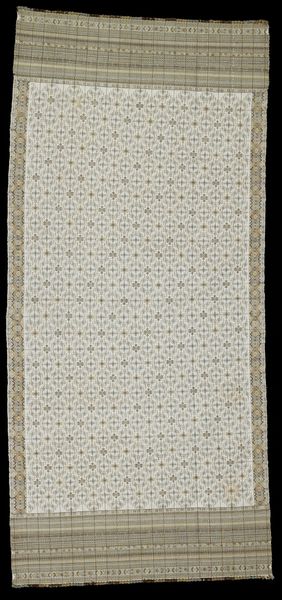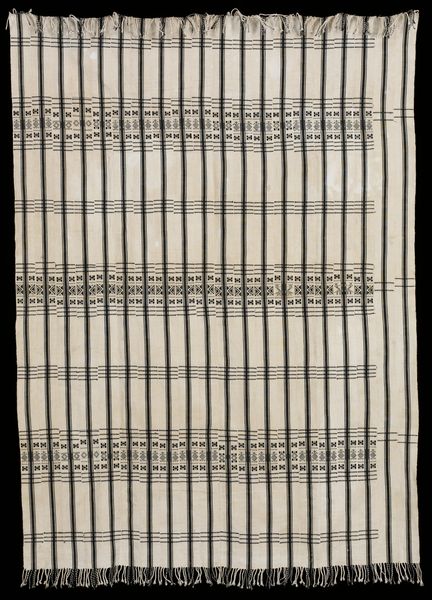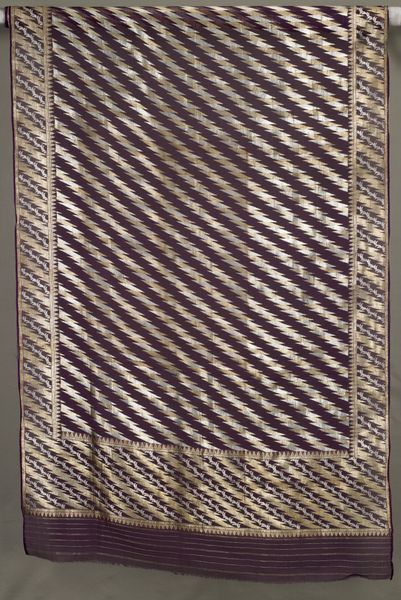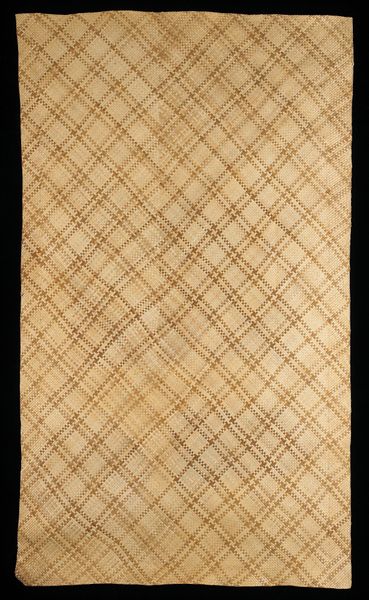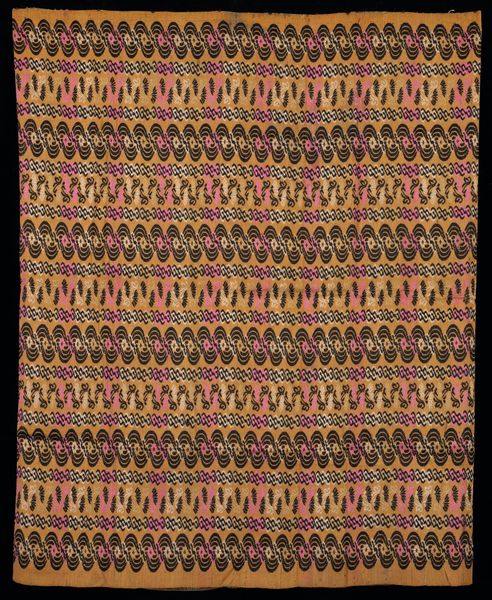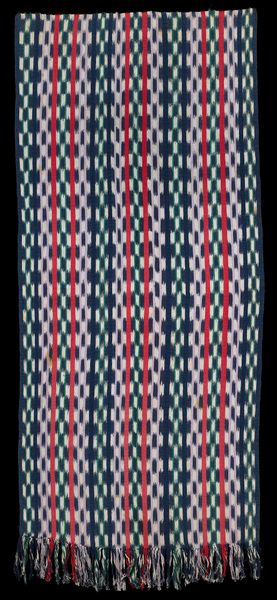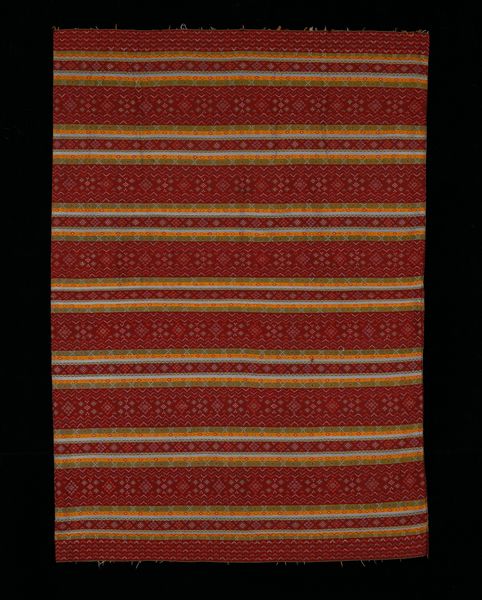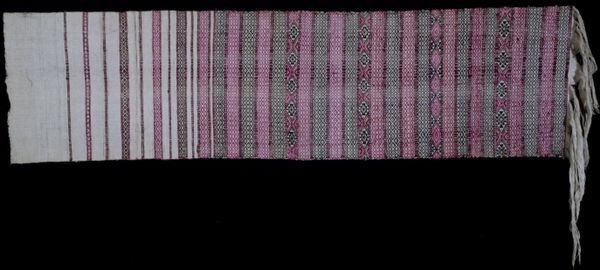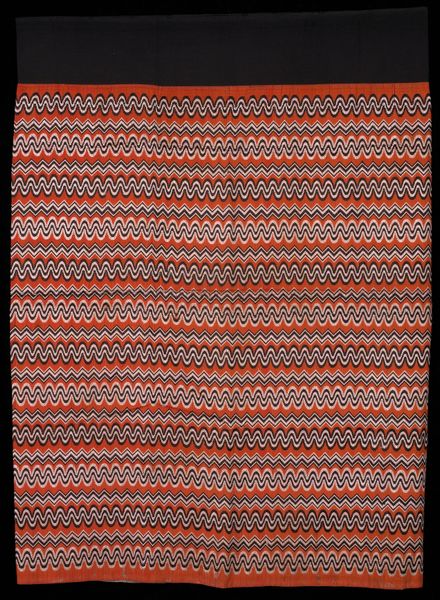
fibre-art, weaving, textile, cotton
#
african-art
#
natural stone pattern
#
fibre-art
#
pattern
#
weaving
#
textile
#
fashion and textile design
#
repetitive shape and pattern
#
organic pattern
#
geometric
#
repetition of pattern
#
regular pattern
#
pattern repetition
#
cotton
#
textile design
#
yoruba-art
#
imprinted textile
#
layered pattern
Dimensions: 67 1/2 x 49 in. (171.45 x 124.46 cm)
Copyright: Public Domain
Curator: The texture is striking; the rhythmic interplay of positive and negative space is quite captivating. Editor: Indeed. What we're looking at is a cotton textile titled "Wrapper," created circa 1950 by a Yoruba artist. It’s currently held at the Minneapolis Institute of Art. Curator: The horizontal bands constructed by short, dashed lines against the backdrop of those firm vertical stripes create such a distinct visual language. One can’t help but think about semiotics when decoding these interwoven lines. Editor: Absolutely. Cloth played a pivotal role in Yoruba society. Textiles weren't just about utility; they symbolized status, identity, and even power. The wrapper, particularly, was a significant garment in a woman's wardrobe, serving both functional and aesthetic purposes. Curator: Look closer: the intentional gaps between the stitched patterns permit glimpses through the weave. What significance can you apply to the permeable pattern, like looking through it into another life or space? Editor: I’m reminded that textile production, traditionally a female domain in Yoruba culture, provided women with economic independence and a platform for artistic expression. Wrappers like this one served as markers of cultural pride and community identity, differentiating the Yoruba from other ethnic groups. The motifs chosen weren’t arbitrary, and the techniques employed reflected generational knowledge passed down through lineages of female weavers. Curator: But how do we assess that generational knowledge and its significance purely through form, shape and composition? How can we see meaning purely by visual markers such as color, size, scale? Editor: Those elements, certainly, help. But it's crucial to recognize that appreciating an object like this "Wrapper" goes beyond just aesthetics; it involves understanding the historical and social context that shaped its creation. It compels us to confront power dynamics that determined whose stories get told, and whose get left behind. Curator: That’s certainly one way of seeing this fascinating piece. As I ponder these things, it brings me to see and admire how a relatively simple interplay of threads can weave complex meanings. Editor: Yes, understanding how a piece fits into a larger cultural and political landscape makes appreciating these designs that much richer.
Comments
No comments
Be the first to comment and join the conversation on the ultimate creative platform.
